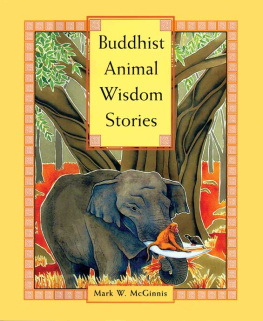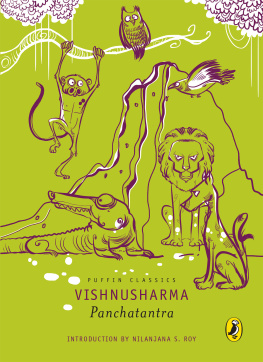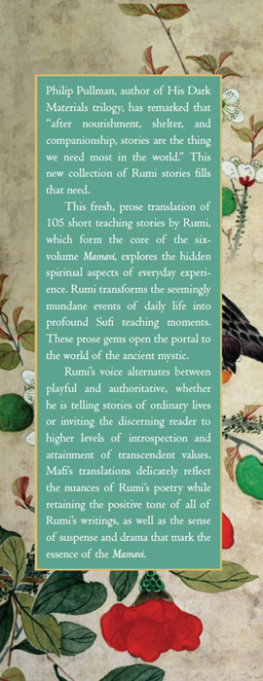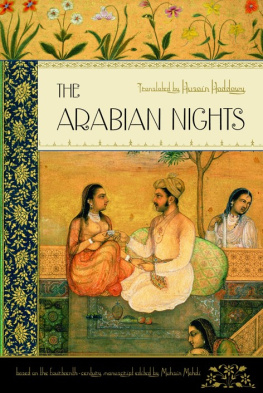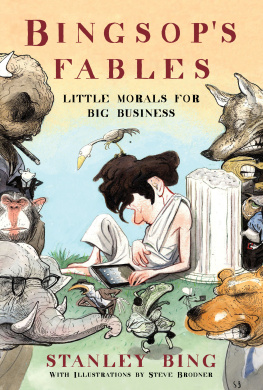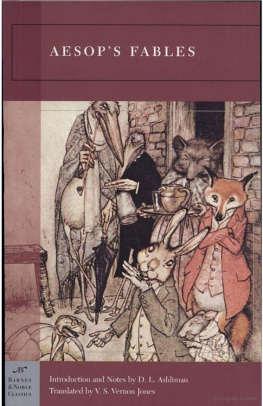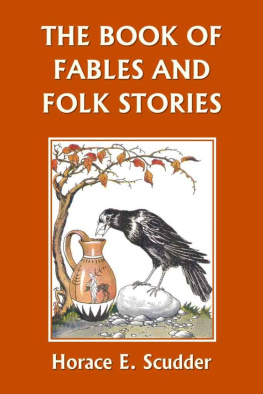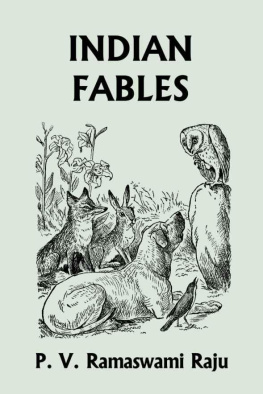CHANDRA RAJAN studied Sanskrit from the age of nine, in the time-honoured manner, with a pandit in Madras. She went to St Stephens College, Delhi, where she had a distinguished academic record and took degrees in English and Sanskrit. Trained early in Carnatic music, she studied Western music in New York. She has taught English at Lady Sri Ram College, Delhi University, and at the University of Western Ontario, London, Canada. Her publications include Winged Words; Re-Visions, a volume of verse; and Klidsa: The Loom of Time published by Penguin India in 1989. Chandra Rajan is currently working on a childrens version of the panatantra and a translation and critical study of Bnas famous prose romance, Kdambari, and a series of tales belonging to the Vikramaditya cycle: The Goblin Tales, also known as the Vetlapanavimati. She is also involved in a long-term project for the Sahitya Akademi a translation of the complete works of Klidsa.
The Panatantra
Translated from the Sanskrit with an Introduction by
CHANDRA RAJAN
PENGUIN BOOKS
PENGUIN BOOKS
Published by the Penguin Group
Penguin Books Ltd, 80 Strand, London WC2R 0RL, England
Penguin Group (USA) Inc., 375 Hudson Street, New York, New York 10014, USA
Penguin Group (Canada), 90 Eglinton Avenue East, Suite 700, Toronto, Ontario, Canada M4P 2Y3
(a division of Pearson Penguin Canada Inc.)
Penguin Ireland, 25 St Stephens Green, Dublin 2, Ireland (a division of Penguin Books Ltd)
Penguin Group (Australia), 250 Camberwell Road, Camberwell,
Victoria 3124, Australia (a division of Pearson Australia Group Pty Ltd)
Penguin Books India Pvt Ltd, 11 Community Centre,
Panchsheel Park, New Delhi 110 017, India
Penguin Group (NZ), cnr Airborne and Rosedale Roads, Albany,
Auckland 1310, New Zealand (a division of Pearson New Zealand Ltd)
Penguin Books (South Africa) (Pty) Ltd, 24 Sturdee Avenue,
Rosebank, Johannesburg 2196, South Africa
Penguin Books Ltd, Registered Offices: 80 Strand, London WC2R 0RL, England
www.penguin.com
First published by Penguin Books India 1993
Published in Penguin Classics 2006
1
Copyright Chandra Rajan,1993
All rights reserved
The moral right of the author has been asserted
Except in the United States of America, this book is sold subject
to the condition that it shall not, by way of trade or otherwise, be lent,
re-sold, hired out, or otherwise circulated without the publishers
prior consent in any form of binding or cover other than that in
which it is published and without a similar condition including this
condition being imposed on the subsequent purchaser
EISBN: 9780140455663
To Tangerina,
a great lady of elegance,
sensitivity and intelligence,
and to her delightful family,
special in individual ways:
I have learnt much from them.
Key to the Pronunciation of Sanskrit Words
Vowels:
The line on top of a vowel indicates that it is long.
a (short) as the u in but
(long) as the a in far
i (short) as the i in sit
(long) as the ee in sweet
u (short) as the u in put
(long) as the oo in cool
r with a dot is a vowel like the i in first or u in further
e is always a long vowel like a in mate
ai as the i in pile
o is always long as the o in pole
ow as the ow in owl
Consonants:
k, b and p are the same as in English
kh is aspirated
g as in goat
gh is aspirated
is ch as in church or cello
h is aspirated as in chhota
j as in jewel
jh is aspirated
t and d are hard when dotted below as in talk and dot
tt is the aspirated sound
dd is aspirated
n when dotted is a dental; the tongue has to curl back to touch the palate.
n as in king
t undotted is a th as in thermal
th is aspirated
d undotted is a soft soundthere is no corresponding English sound, the Russian da is the closest.
dh is aspirated
ph and bh are aspirated
The Sanskrit v is an English w
There are three sibilants in Sanskrit: S as in song, as in shover and a palatal which is in between, e.g. iva.
Contents
Foreword
The authorship, dates and provenance of ancient Sanskrit texts have always been problematic. The Panatantra is no exception. And in this case the problem is further complicated by the fact that the work belongs to the age-old oral tradition of which storytelling is an important part.
Storytelling has its origins in pre-literate societies of the distant past, where it was a communal activity. No story is ever told the same way twice; no song is ever sung the same way twice. Names and dates are difficult to pin accurately and securely to works in the oral tradition.
The author of the Panatantra is a storyteller of hoary antiquity, an almost legendary figure like Vysa (a word that literally means compiler or editor) whom tradition declares to be the author of the Mahbhrata. In fact we know a little more about the author of the Mahbhrata than we do about the author of the Panatantra. Tradition ascribes this fabulous work to one Visnu arma. But we know nothing about this gifted author who, judging from the artistry displayed in the text he is credited with having composed, brought storytelling to such heights of sophistication; who in fact created a literary genre of storytelling; who had many imitators over the centuries, none of them his equal.
Sometimes the name Visnu arma is given as one of the names of Visnugupta nakya (son of anaka), the author of the Arthastra. But there is no evidence to show that the author of the Arthastra also wrote a Nitistra, the term used to describe the Panatantra; there is nothing to prove the contrary either.
Who then is Visnu arma? His name occurs in the Preamble to the text, nowhere else. He is a celebrated teacher living in Mahilropya, a place unidentified except by H. H. Wilson who suggests that it might be Mayilpura, Peacock City, now part of the capital of Tamil Nadu. As he says of himself, he is eighty years of age, has no worldly desires and concerns; and he is successful in educating three very refractory princes in six months time through storytelling, so that they become expert in the art of government. Then he fades away leaving behind an impersonal voice. This is not much to go upon. And what little there is about Visnu arma is all in the text; it is part of the story-book world.
We are therefore left with two possibilities to consider in relation to the identity of the author of the Panatantra. Visnu arma might have been the name of the storyteller/author who had the imagination and the artistry to first shape a floating body of talespopular and moral tales, fairytales and folkloreinto the artistic whole with the complex and unique structure and well-defined purpose that the


